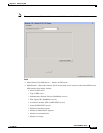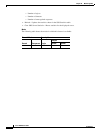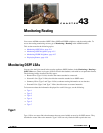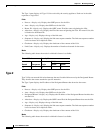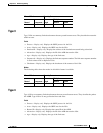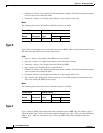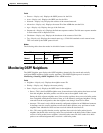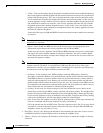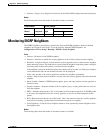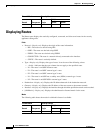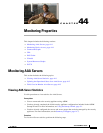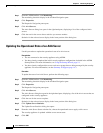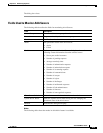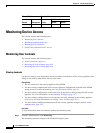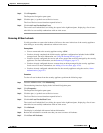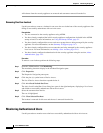
43-7
Cisco ASDM User Guide
OL-16647-01
Chapter 43 Monitoring Routing
Monitoring EIGRP Neighbors
• Interface—Display only. Displays the interface on which the OSPF neighbor has formed adjacency.
Modes
The following table shows the modes in which this feature is available:
Monitoring EIGRP Neighbors
The EIGRP Neighbors pane displays dynamically discovered EIGRP neighbors. Statically defined
neighbors do not appear in this pane. To see the statically defined EIGRP neighbors, see
Configuration > Device Setup > Routing > EIGRP > Static Neighbor.
Fields
• Address—IP address of the EIGRP neighbor.
• Interface—Interface on which the security appliance receives hello packets from the neighbor.
• Holdtime—Length of time (in seconds) that the security appliance waits to hear from the neighbor
before declaring it down. This hold time is received from the neighbor in the hello packet, and begins
decreasing until another hello packet is received from the neighbor.
If the neighbor is using the default hold time, this number will be less than 15. If the peer configures
a non-default hold time, the non-default hold time will be displayed.
If this value reaches 0, the security appliance considers the neighbor unreachable.
• Uptime—Elapsed time (in hours:minutes: seconds) since the security appliance first heard from this
neighbor.
• Queue Length—Number of EIGRP packets (update, query, and reply) that the security appliance is
waiting to send.
• Sequence Number—Sequence number of the last update, query, or reply packet that was received
from the neighbor.
• SRTT—Smooth round-trip time. This is the number of milliseconds required for an EIGRP packet
to be sent to this neighbor and for the security appliance to receive an acknowledgment of that
packet.
• RTO—Retransmission timeout (in milliseconds). This is the amount of time the security appliance
waits before resending a packet from the retransmission queue to a neighbor.
• Clear Neighbors—Click the Clear Neighbors button to clear dynamically-learned neighbors from
the neighbor table.
Modes
The following table shows the modes in which this feature is available:
Firewall Mode Security Context
Routed Transparent Single
Multiple
Context System
• — • ——



